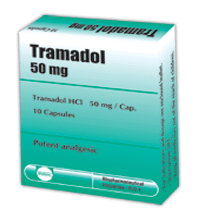 One can buy Tramadol to provide relief to patients suffering from cancer. Two different categories of analgesics are generally Tramadol for the treatment of cancer patients. Tramadol Tramadol Short acting and acting are the two types of medicine. The shorter are used for immediate relief and already used for pain relief around the clock. Tramadol plays the role of enhancing the levels of norepinephrine and serotonin, thereby reducing the body's ability to feel pain. The effects of different tramadols are different. Little effect tramadols has a 3 to 4 hours and sustain the action models of pain longer decreased until approximately 24 hours.
One can buy Tramadol to provide relief to patients suffering from cancer. Two different categories of analgesics are generally Tramadol for the treatment of cancer patients. Tramadol Tramadol Short acting and acting are the two types of medicine. The shorter are used for immediate relief and already used for pain relief around the clock. Tramadol plays the role of enhancing the levels of norepinephrine and serotonin, thereby reducing the body's ability to feel pain. The effects of different tramadols are different. Little effect tramadols has a 3 to 4 hours and sustain the action models of pain longer decreased until approximately 24 hours.You can also buy Tramadol in patients suffering from osteoarthritis. For shorter acting, Tramadol pain relief can be provided by having a 50 mg tablet. The extended-release tablets come in different doses as 100 mg, 200 mg or 300 mg. Tablets should be taken as a whole, not chewing or division, for better pain relief tramadol. After buying Tramadol should be taken in accordance with the guidelines of the physician to avoid side effects of medication. Wrong dosage of tramadol may result in serious damage to the body, including death.
Tramadol should be avoided because they are mothers, and mothers in breastfeeding. Tramadol use in this period is uncertain, as it can lead to complications in the baby inside. The excessive use of medication can lead to dependency, so it is best not to use the medication without consulting your doctor. Some temporary side effects like nausea, dizziness, dry mouth, pruritus, etc. can be seen at times due to the use of tramadol. Tramadol overdose can also lead to neurological disorders in the patient which leads to thoughts of suicide or the like.




